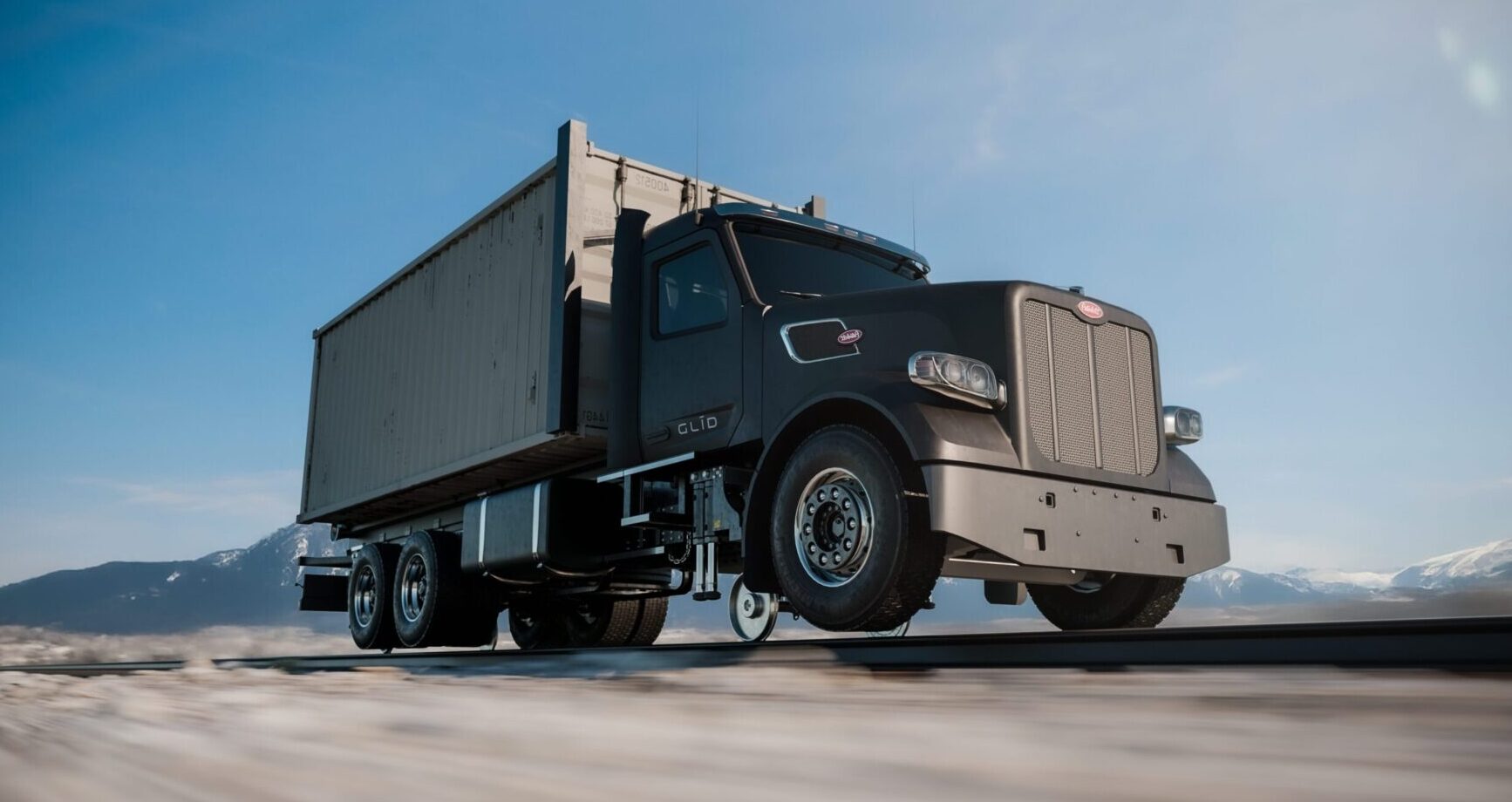The first autonomous road to rail Glīders to pilot with historic Mendocino Railway in 2025
California based Glīd Technologies is on a mission to advance railways with the first autonomous road to rail solution. This vision will catapult global supply chain Management Market size predicted to reach USD 58.7 billion by 2030.
When businesses transport goods for manufacturers, retailers, or suppliers, the most time-consuming tasks are the first-mile collections from the senders and the last-mile deliveries to the recipients. Founded in 2022 Glīd Technologies has been working to address the inefficiencies in first-mile and last-mile transportation at a full steam ahead approach.
Glīd Technologies is a company that specializes in developing clean, advanced multi-modal autonomous vehicles with road-to-rail capabilities to streamline first-mile and last-mile transportation. These vehicles are called “Glīders,” engineered with sophisticated robotics technology that will revolutionize transload and material conveyance operations nationwide. See how they operate here Glider M Preview
The Objective
Glīd Technologies was created to fulfill a particular purpose and mission. The founders wanted to make rail freight more easily accessible in the supply chain without building more rail infrastructure. That is where the Glīders come into play.
Glīders are autonomous hybrid vehicles that use road and rail systems to transport products. The company’s two biggest innovative vehicles are the hybrid manned vehicle, the Glider M, and the autonomous road-to-rail vehicle, the AR2RV. Both vehicles are designed with intelligence and mobility to reduce the cost of freight transportation by removing transloading inefficiencies and dependency on industrial machineries like cranes and forklifts.
This process requires humans and autonomous AI systems to work together as it is neither fully manned nor fully autonomous. Glīd Technologies incorporates human-in-the-loop (HITL) autonomy to provide more oversight and enhance safety, cleanliness, and operational efficiency. It also ensures that more jobs are created rather than eliminated by this technology.
Partnership with Mendocino Railway
The Mendocino Railway is a historic railroad in Western California, better known as the Skunk Train. The railway traditionally provides a passenger and freight transportation service along this scenic 40-mile route with plenty of beauty to see along the way, especially when the train passes through the redwood forests.
On April 30th, 2025, Glīd Technologies announced it would be forming a strategic partnership with Mendocino Railway to test its new hybrid and autonomous freight vehicle technologies on the railway, specifically the Willits-to-Fort Bragg corridor. Upon signing a mutual agreement, Glīd Technologies and Mendocino Railway vowed to revitalize existing and underused infrastructure to strengthen logistical operations in rural and small communities.
This isn’t just about technology—it’s about legacy, opportunity, and transformation,” said Kevin Damoa, CEO of Glīd. “Mendocino Railway has preserved a critical regional lifeline. Together, we’re infusing it with a new purpose, deploying clean, intelligent freight mobility that can serve as a national model for shortline rail innovation and rural economic development.”
Sometime in 2025, the Glīder M and AR2RV will be launched and deployed into the Mendocino Railway to begin their transportation operations. It is merely a pilot project to assess their scalability, dependability, and overall performance along the 40-mile route. If the project is successful, this kind of intelligent freight mobility could inspire rural economic development and enhanced shortline rail innovation across the country.
Think about all the jobs that will be created in rural communities nationwide, from workforce upskilling to local engagement, to support this initiative. There will also be a lot of public and private coordination to bring additional support from state and federal government agencies.
Mendocino Railway has been operating since 1885. It is one of the most historic and scenic rail lines in the United States. The railway’s partnership with Glīd Technologies creates an opportunity to honor its historic roots while paving a bold path toward a future that honors the past and present. Rail will be the leader of regional mobility again, but only this time, it will be much cleaner and smarter than it was in the past.
“This partnership captures the spirit of the Skunk Train—timeless in its roots, bold in its future,” said Robert Jason Pinoli, President and CEO of Mendocino Railway. “We’re excited to work alongside Glīd to chart a path forward where innovation and tradition not only coexist but thrive.”
Founded in 2022
Glīd Technologies was founded in 2022 by Kevin Damoa and Matt Mueller, both former engineers of SpaceX. Mueller has over 15 years of leadership experience as an engineer in the aerospace industry.

Kevin Damoa Co Founder and CEO Glīd Technologies
Damoa is a mechanical engineer and a veteran of the United States Air Force and Army. His combination of experience in mechanical engineering and aerospace logistics allowed him to excel at his SpaceX position as Flight Module Logistics Manager. His job was to design systems that could transport rockets from the production site to the launch site. He also created numerous transportation startup companies using his experience, including Romeo Power, XOS Trucks, Canoo, and Serial 1 Cycle (Harley Davidson).
Damoa and Mueller recently appointed Chaitali Narla to be the new Chief Technology Officer of Glīd Technologies. Narla’s experience includes working as an engineering executive at Stripe and Google. Her expertise includes AI, scalable infrastructure, and cloud-native computing. These are all critical skills she will need to lead the development of Glīd Technologies’ first AI-powered logistics platform, EZRA-1SIX, which will be key to automating transload logistics in short line freight networks nationwide.
Glīd Technologies Stand Out Amongst the Competition
Glīd Technologies isn’t the first company to develop advanced mobile freight technologies for logistical purposes. However, it still stands out among its competitors because it invented one of the first clean energy road-to-rail vehicles utilizing autonomous technologies.
Many rural American communities have plenty of sturdy rail infrastructure dating back to when rail was the chief transportation method in the United States. Despite its age, this rail infrastructure is still strong and useable. All it needs is some improvement to return to fully functional condition.
The problem is that many of these rural communities don’t have the funding or innovative capabilities to revitalize or modernize the rails to satisfy today’s supply chain demands. Glīd Technologies stepping in will change everything because it will make the investments these communities need to revitalize their rail infrastructure.
Glīd Technologies won’t need to construct new logistics hubs or terminals to support its vehicles. It can use existing rail lines to restore local rail operations and get these communities thriving again.
Conclusion
The partnership between Glīd Technologies and Mendocino Railway will undoubtedly make the pilot program successful. Then, over the next 5 to 10 years, Glīd Technologies will likely invest in local workforce training programs and public-private partnerships as it scales its operations to more shortline corridors in California and other states.
Of course, the long-term goal is to expand and deploy this mobility freight model globally, particularly in countries with rail infrastructure inefficiencies and rural communities similar to those in America.



































